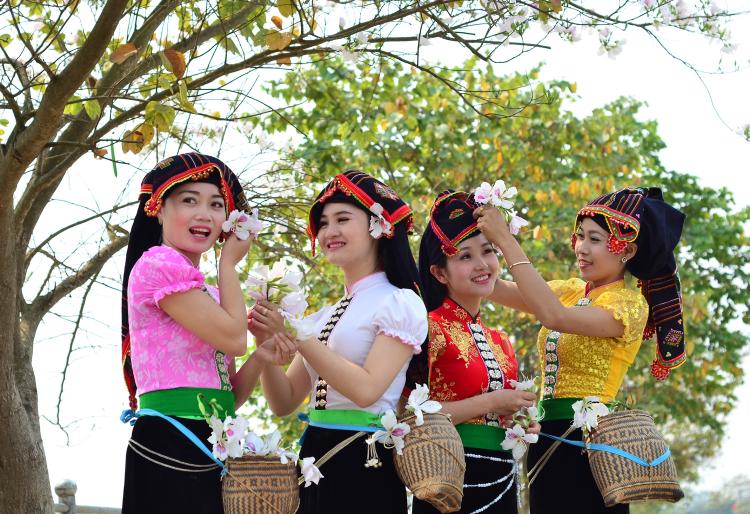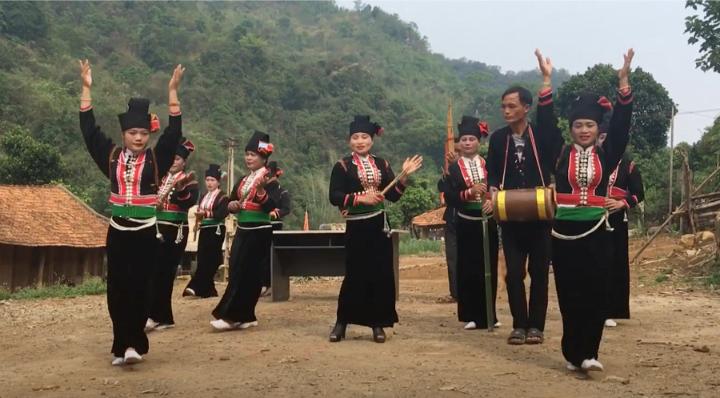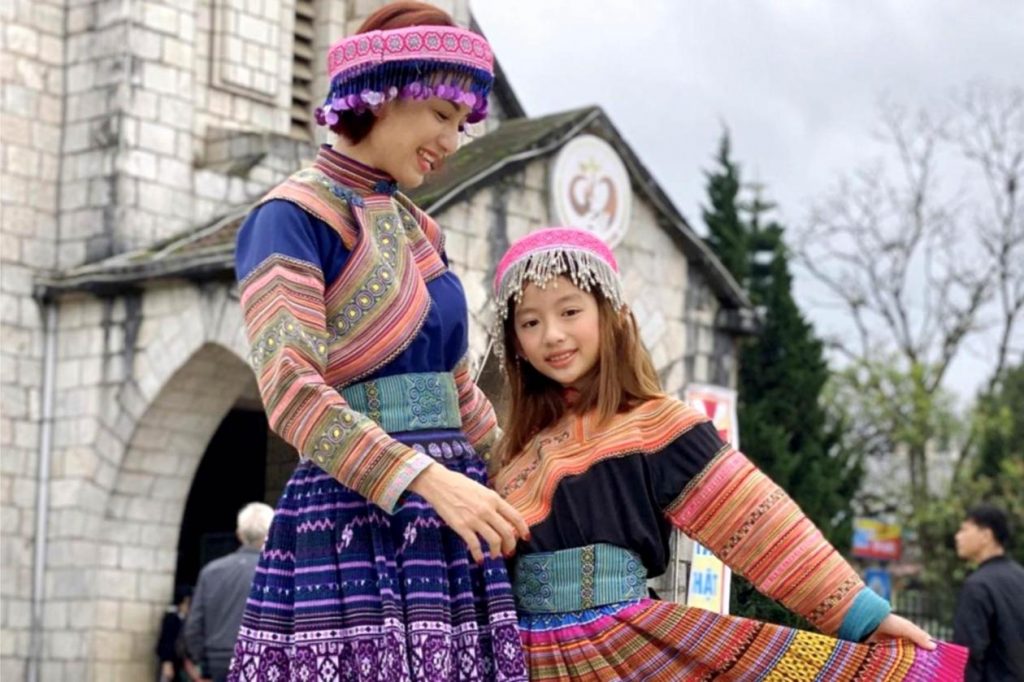The Traditional Clothes of Vietnam in the Northwest region are a vibrant expression of cultural diversity and color. Would you like to experience wearing these outfits?
When it comes to cultural richness, Vietnam’s Northwest region is a vibrant tapestry of tradition and heritage. Among its many treasures are the traditional clothes worn by the H’Mông, Tày, Thái, and Khơ Mú peoples. These outfits are not just garments; they’re a living history that tells the story of Vietnam’s diverse ethnic groups.
Here’s your guide to exploring these captivating traditional clothes and where you can experience them firsthand!
4 Traditional Clothes of Vietnam in the Northwest region
1. H’Mông Traditional Clothes – A Burst of Color and Craftsmanship
The traditional clothes of Vietnam worn by the H’Mong people in the Northwest region have their own distinct character, vibrant with embroidered patterns that make the highland girls stand out like flowers blooming on the rocks.
The traditional clothing of the H’Mong people features four main colors: blue, red, purple, and yellow. A complete outfit includes a skirt, shirt, bib, leg wraps, and a belt. The skirt is cone-shaped with pleats and a wide flare, adorned with intricate and delicate embroidered patterns. They also wear belts, leg wraps, and a square embroidered scarf on their heads.
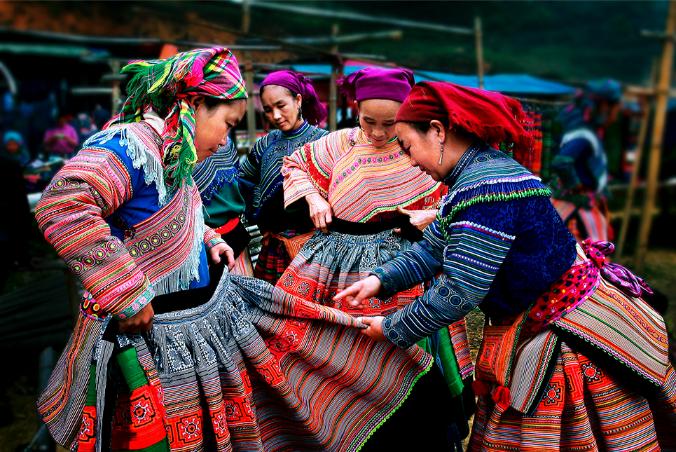
Among the Traditional Clothes of Vietnam, Hmong ethnic attire stands out with its vibrant and colorful designs
Where to Experience: You can admire and even wear H’Mông clothes during your visit to places like Sapa and Ha Giang. Engage in local festivals, or visit ethnic markets where traditional garments are proudly displayed.
2. Tày Traditional Clothes – Elegance and Simplicity
Among the traditional clothes of Vietnam, the traditional clothing of the Tay people in Northwest Vietnam is the simplest among the traditional outfits of various ethnic groups in Vietnam. Despite its simplicity, this attire reflects the Tay people’s straightforward yet deeply emotional way of life.
Both the traditional clothing for men and women of the Tay ethnic group are made from self-woven cotton fabric dyed with indigo. Men’s attire typically includes wide-legged pants with a leaf belt and a short, five-panel shirt with a standing collar. Women’s clothing consists of a long, five-panel blouse, a skirt, a belt, a headscarf, and fabric shoes. They often accessorize with silver jewelry to add a distinctive touch to their outfit.
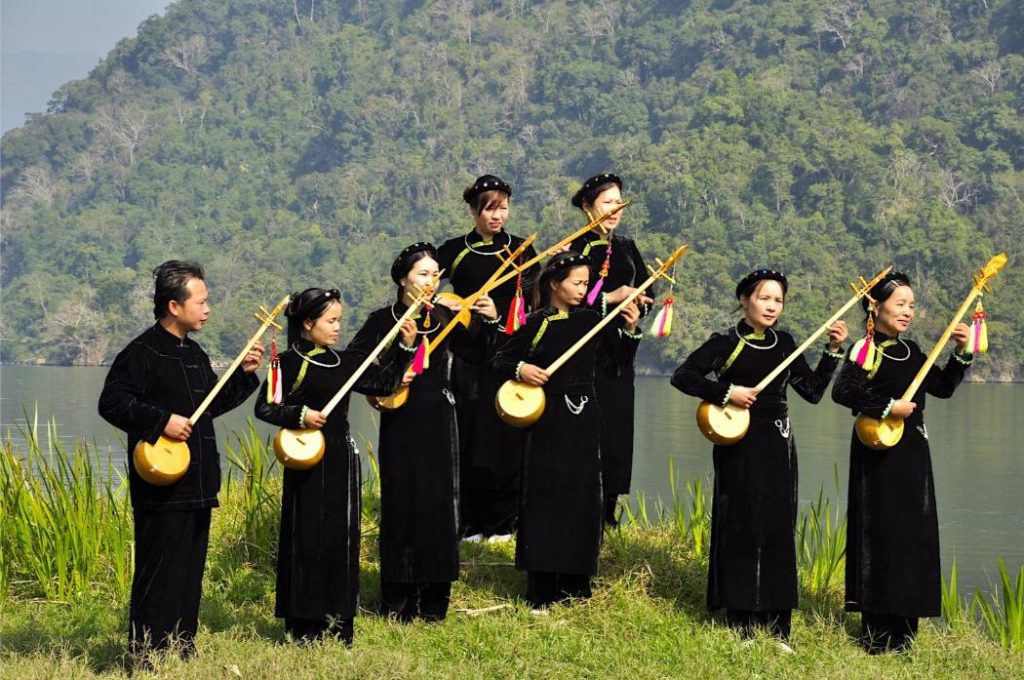
Tày Traditional Clothes – One of the simplest outfits in the Traditional Clothes of Vietnam from the Northwest region
Where to Experience: Head to Cao Bang or Bac Kan to see the Tày people in their traditional attire. Participate in village festivals or visit local craft shops to get a closer look at these beautiful garments.
